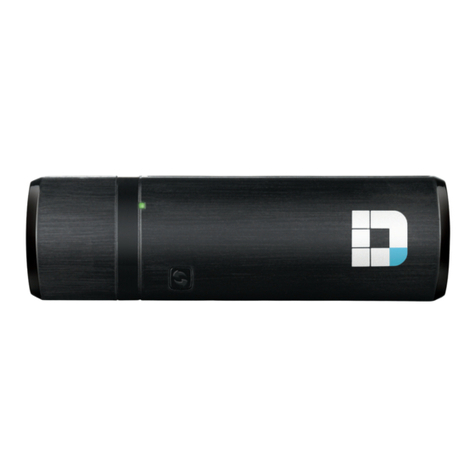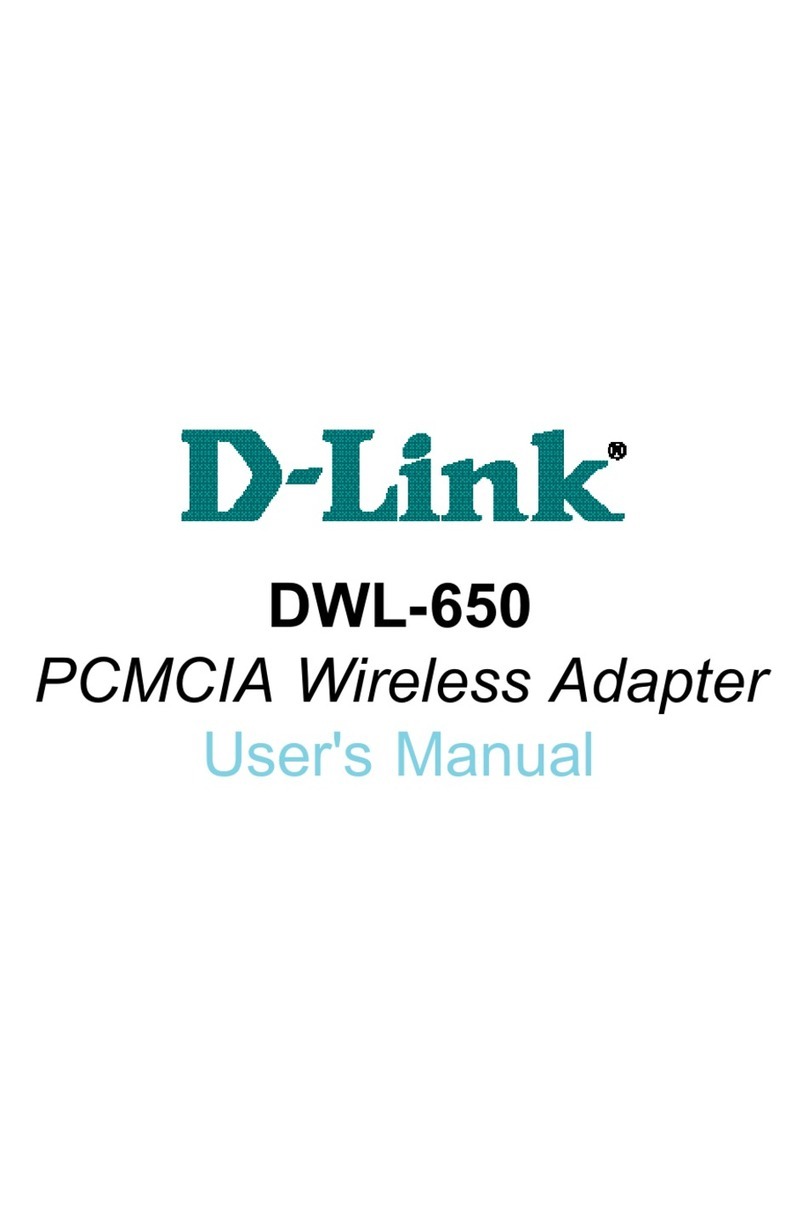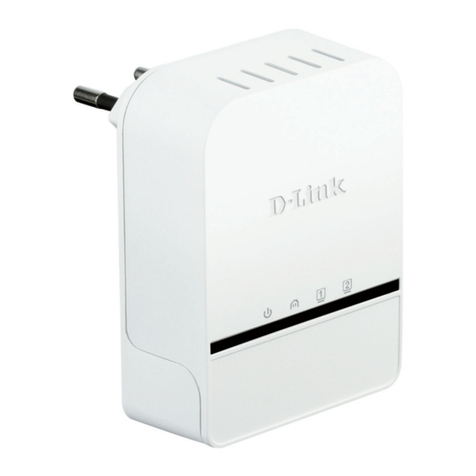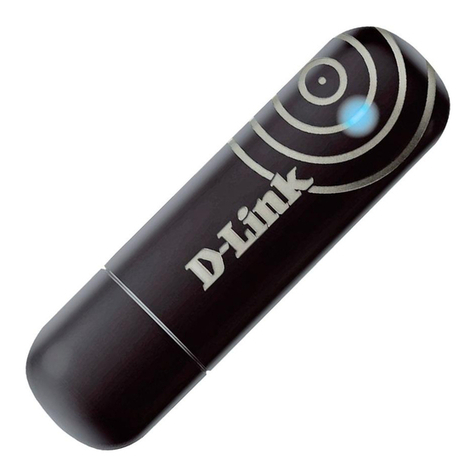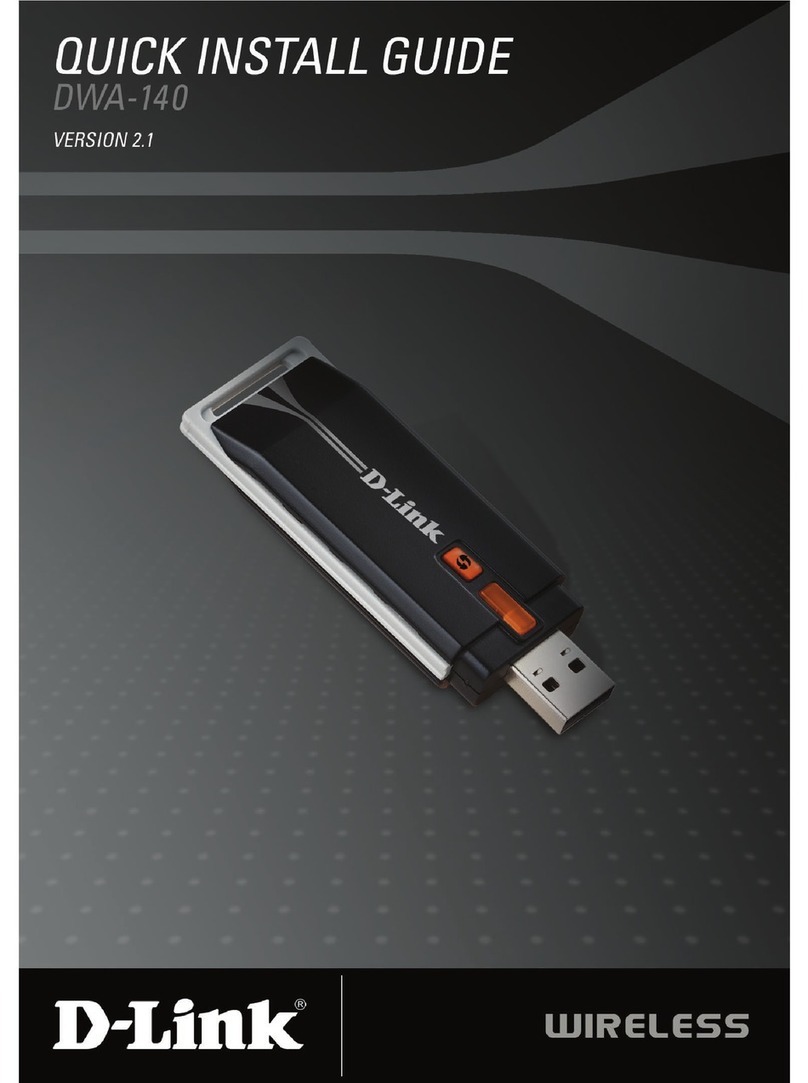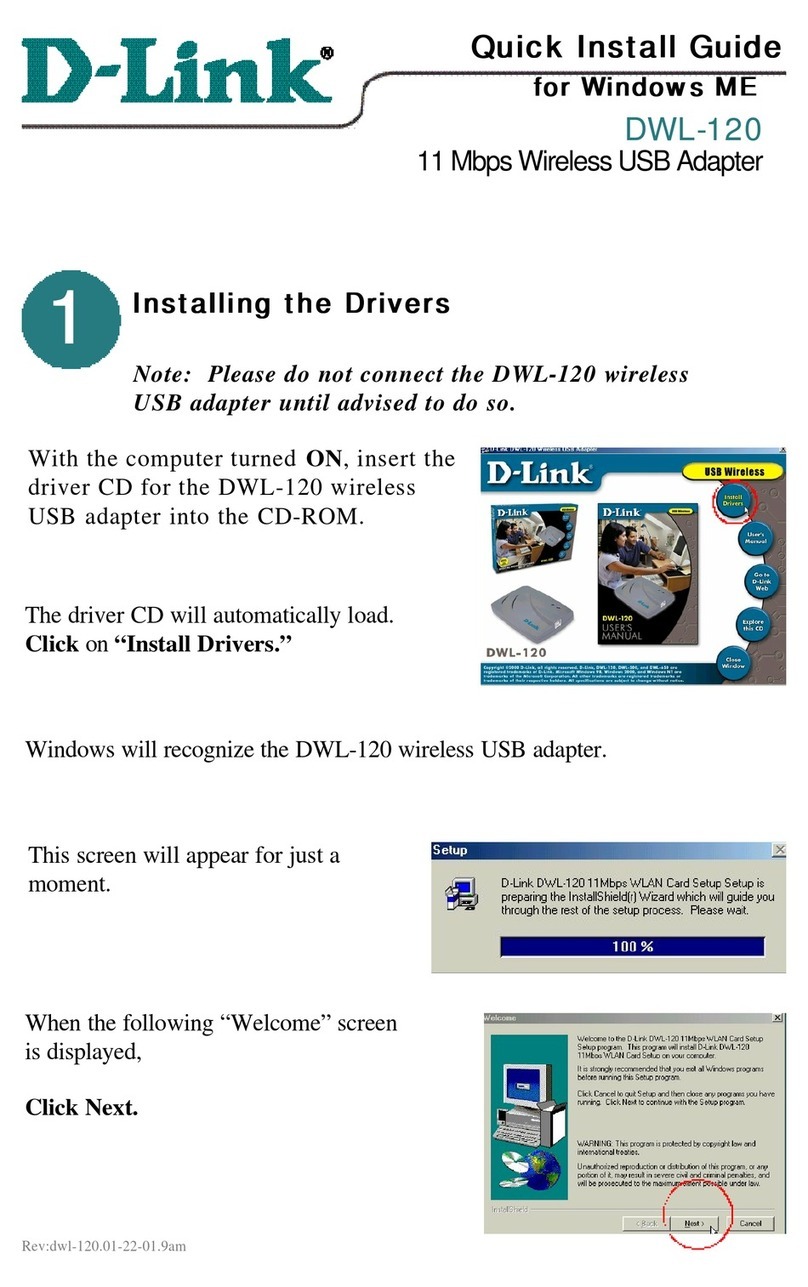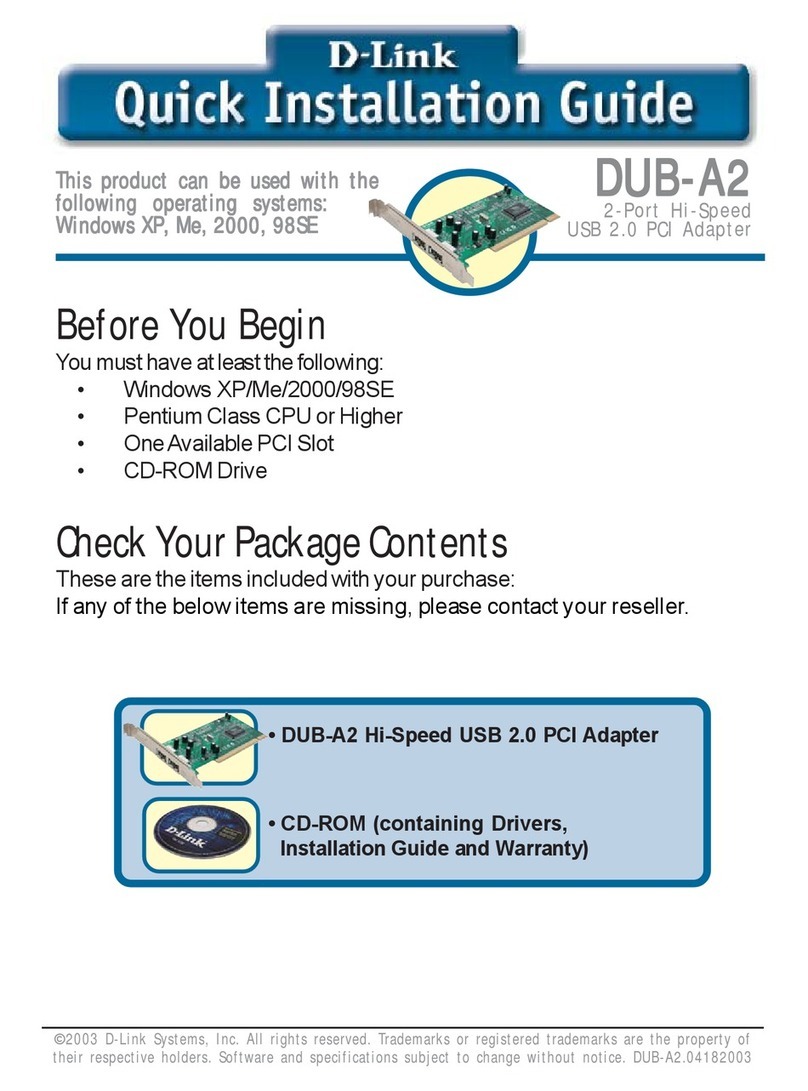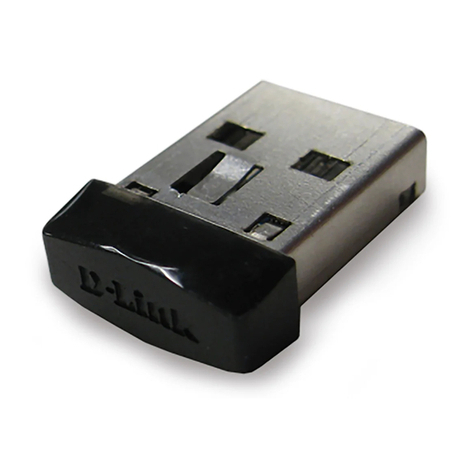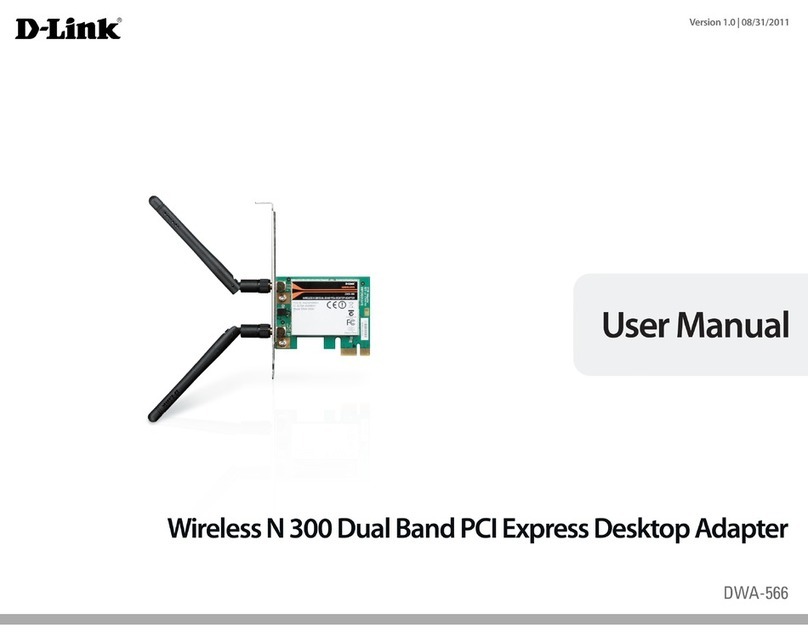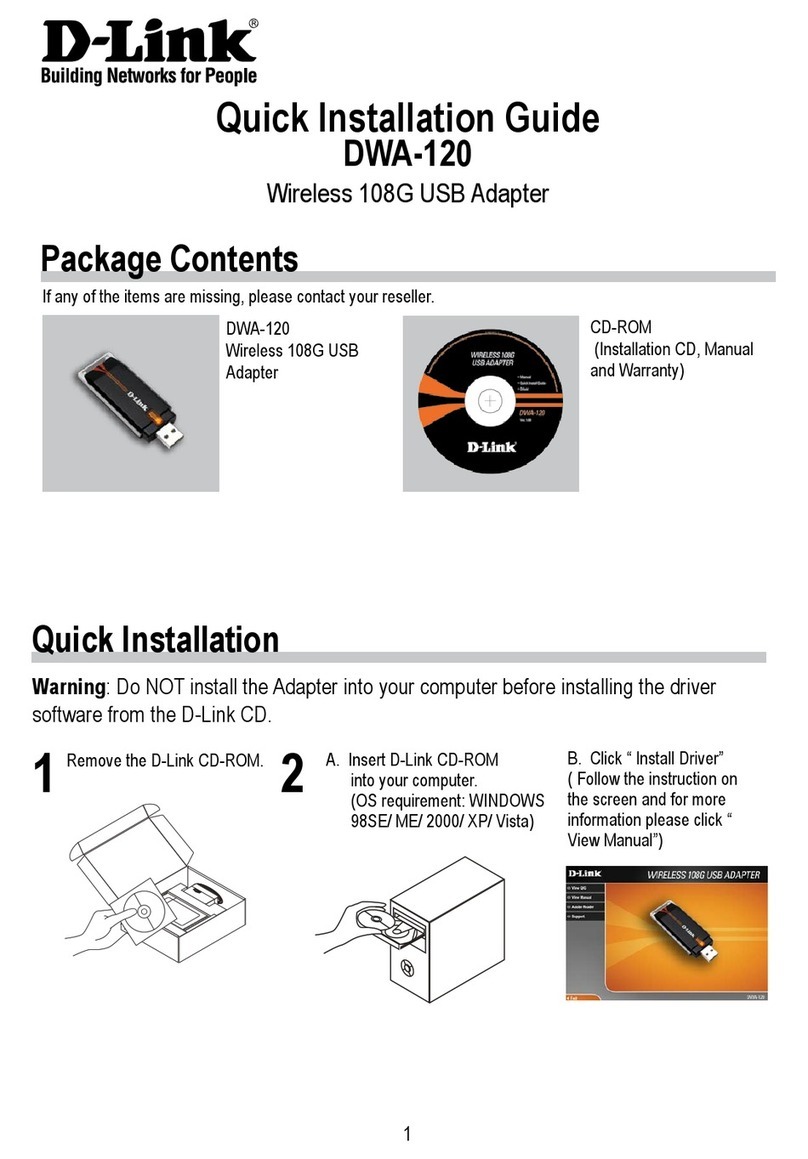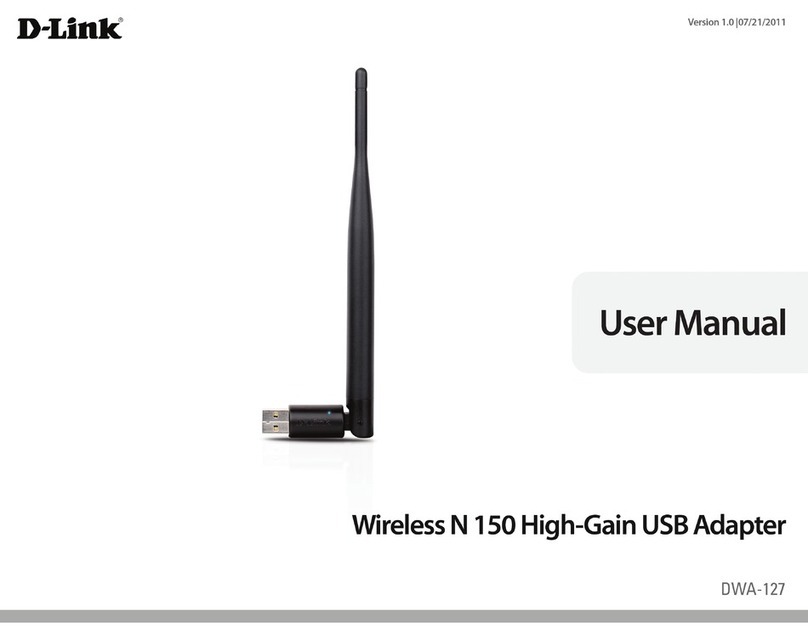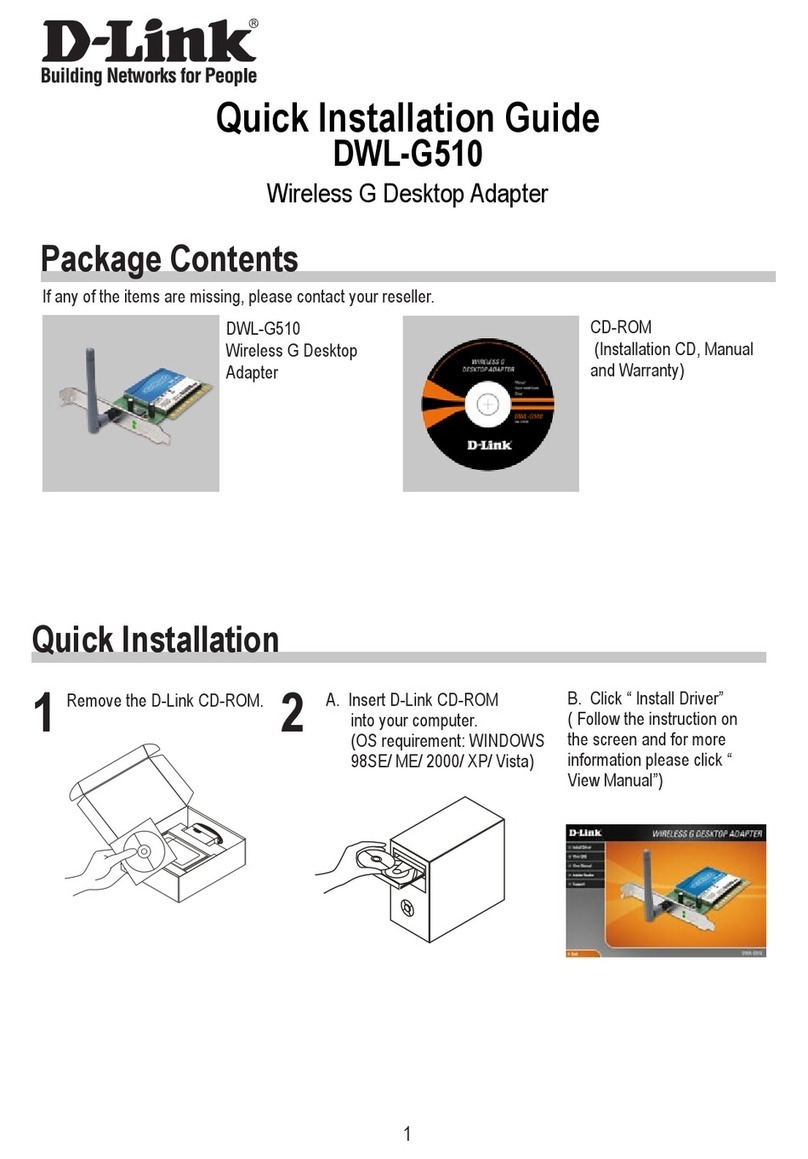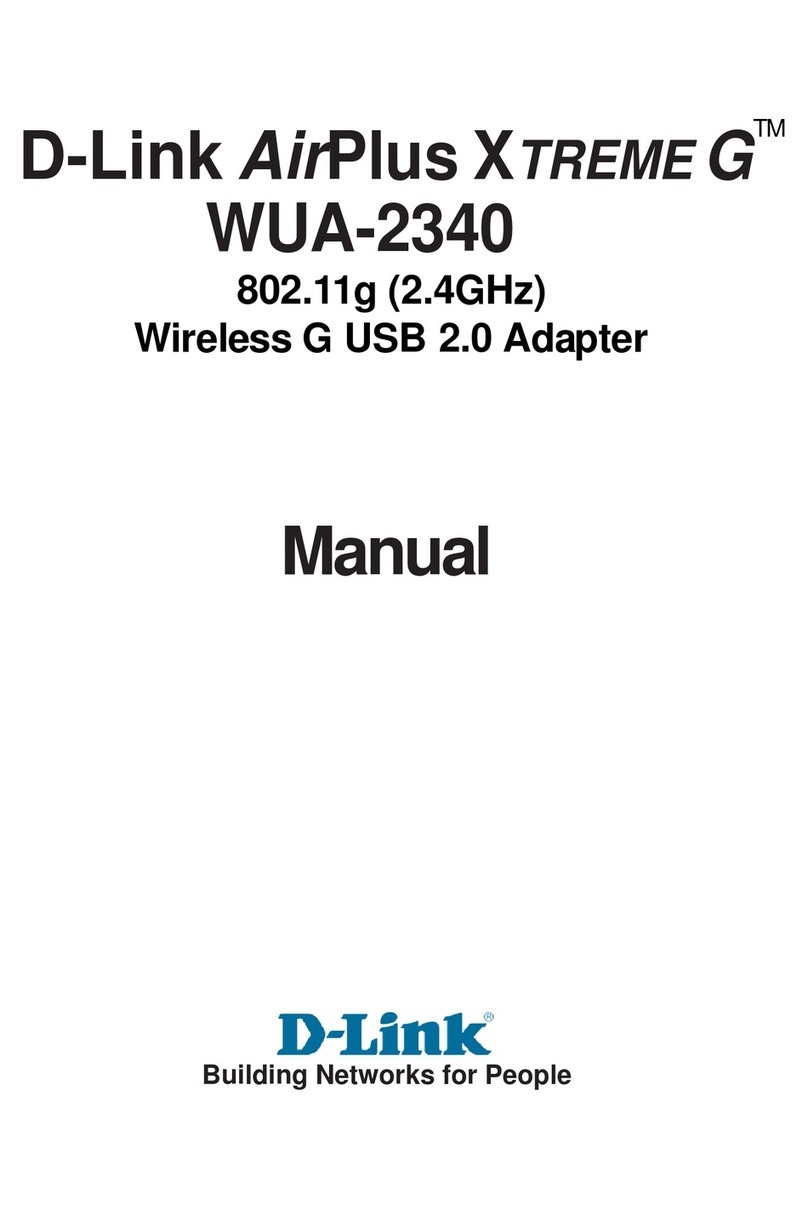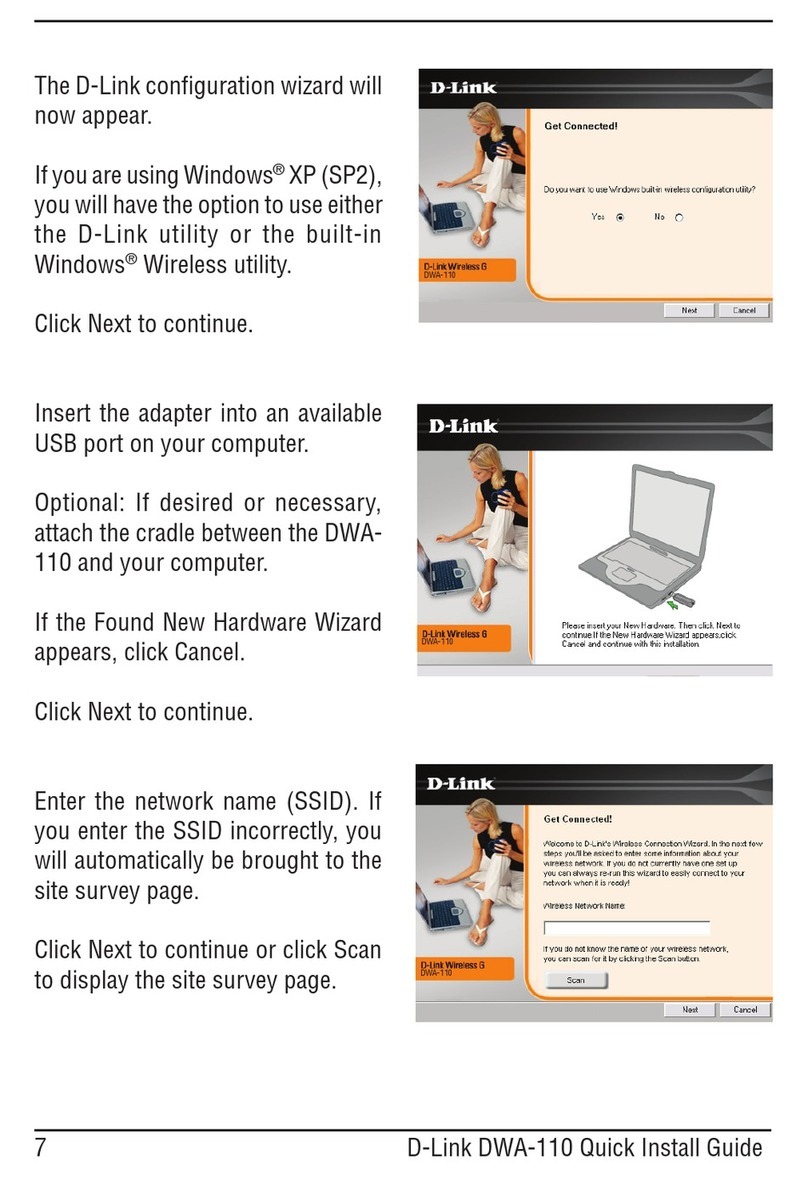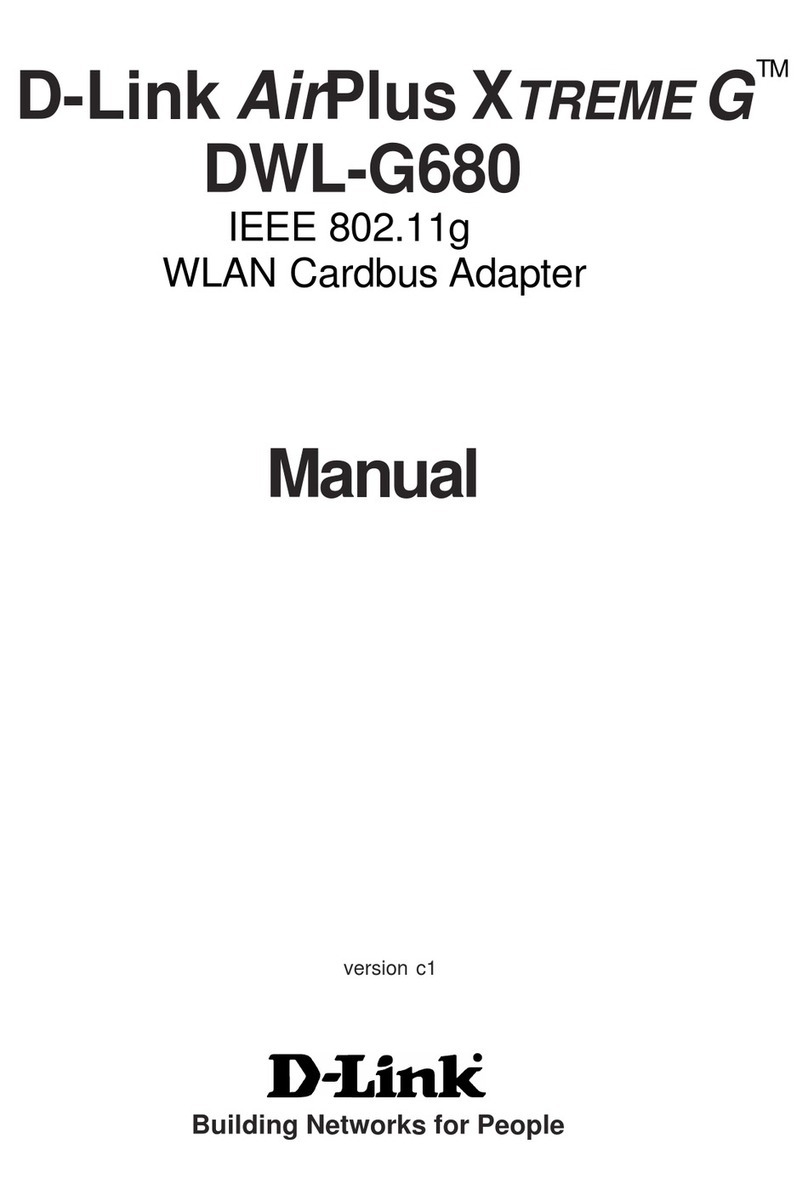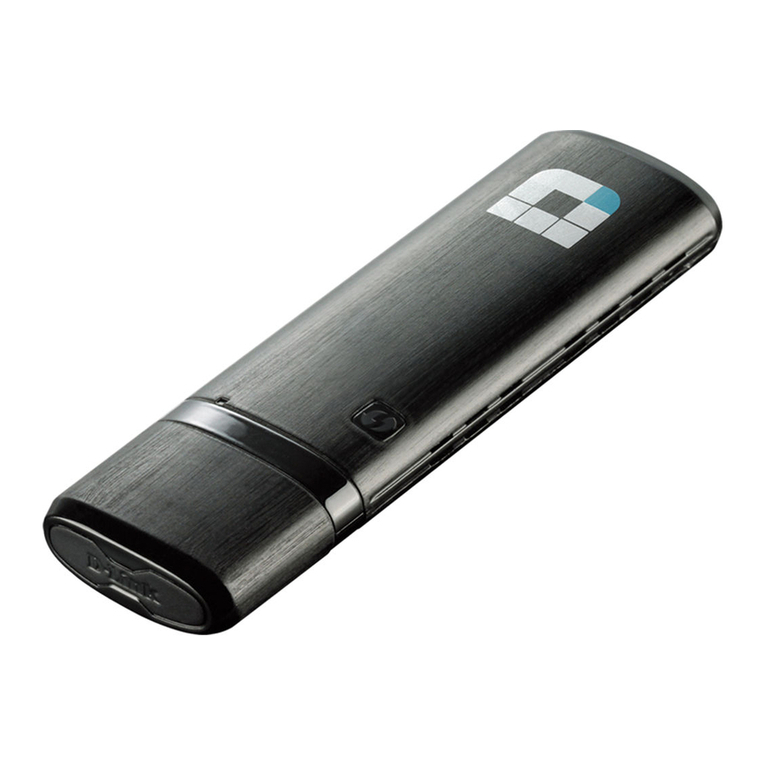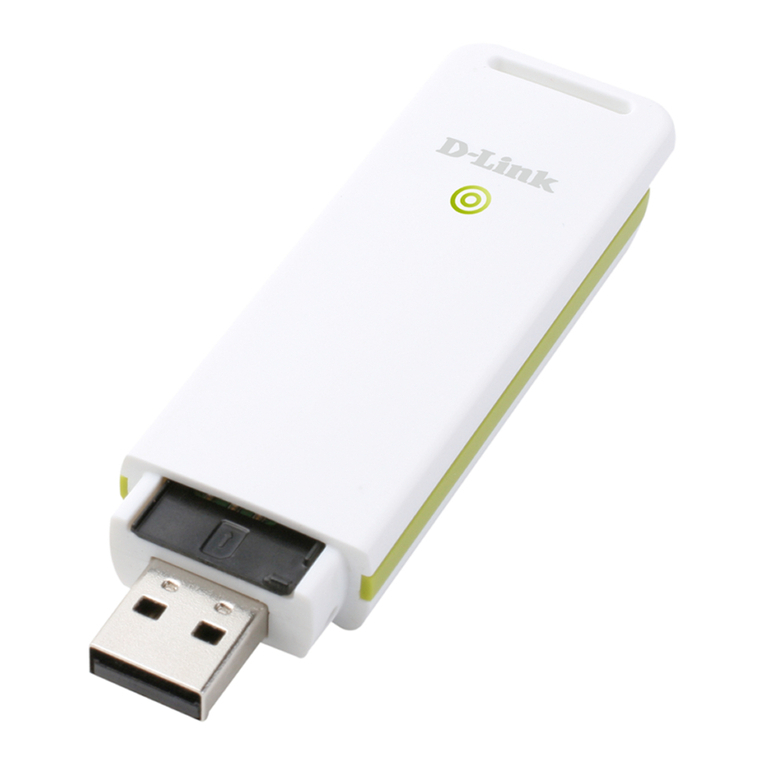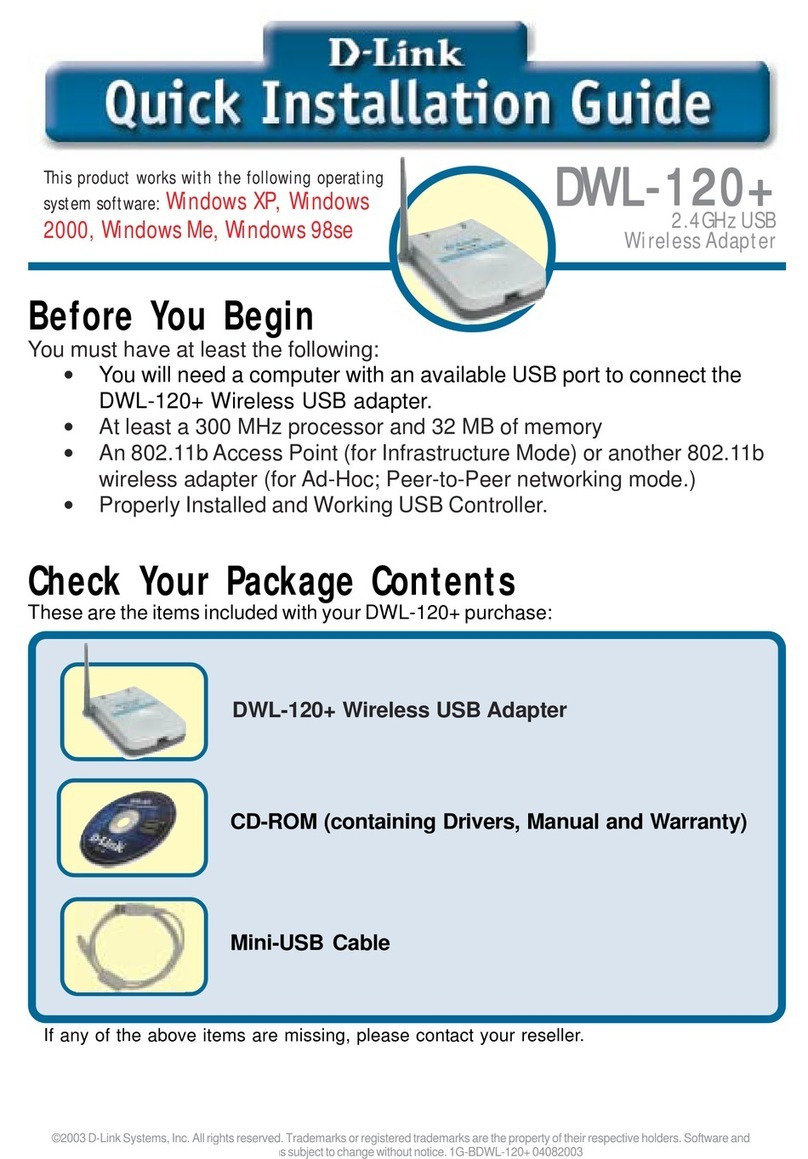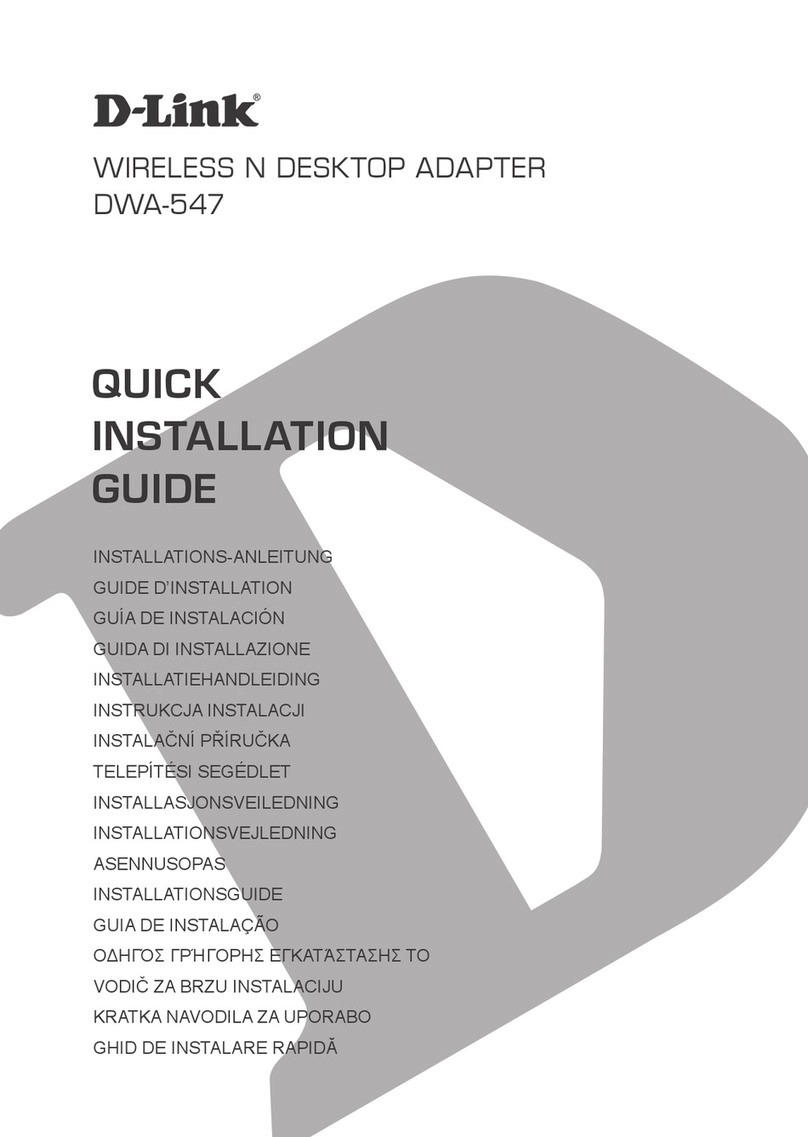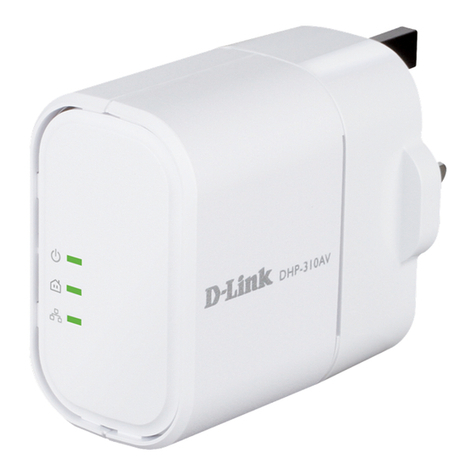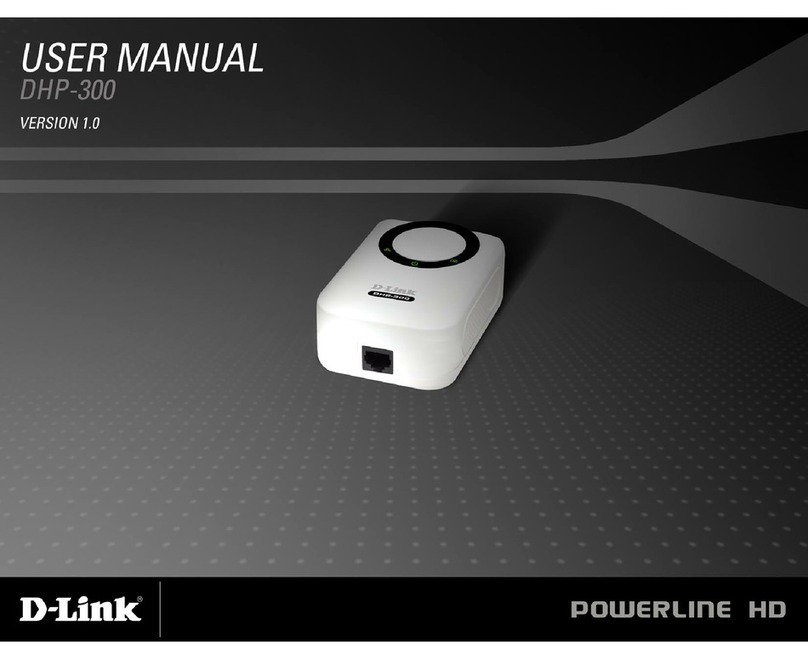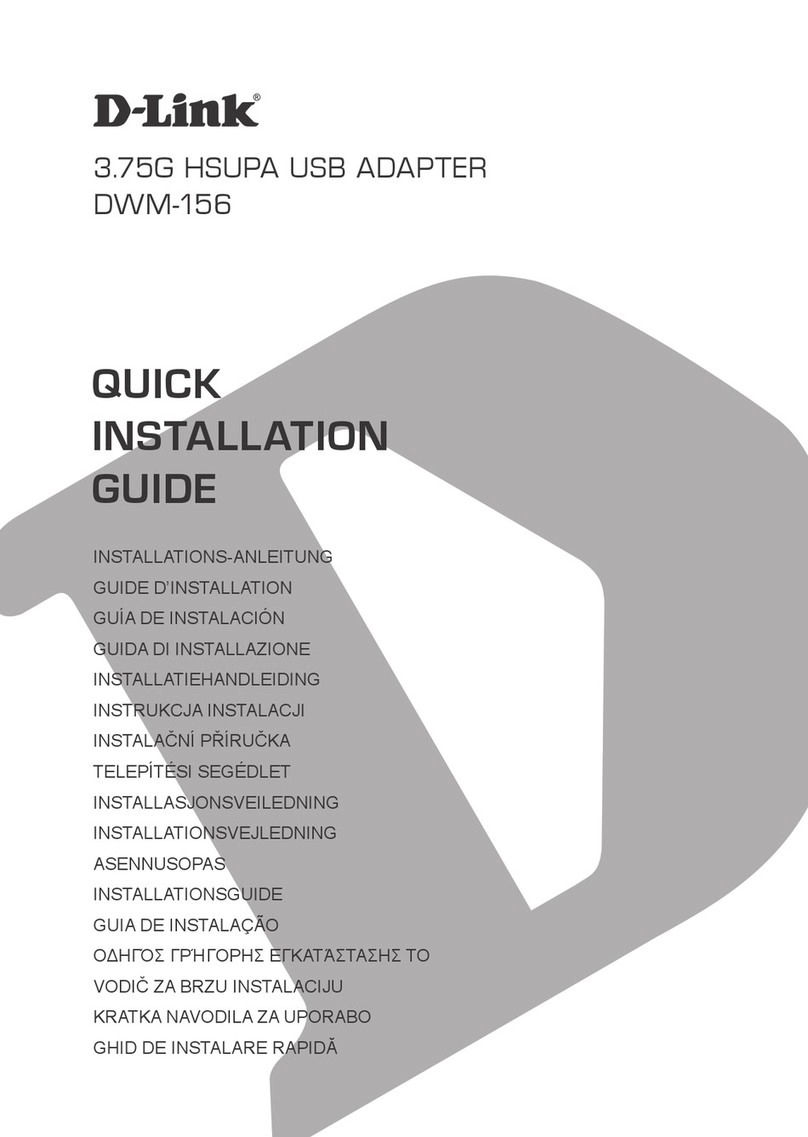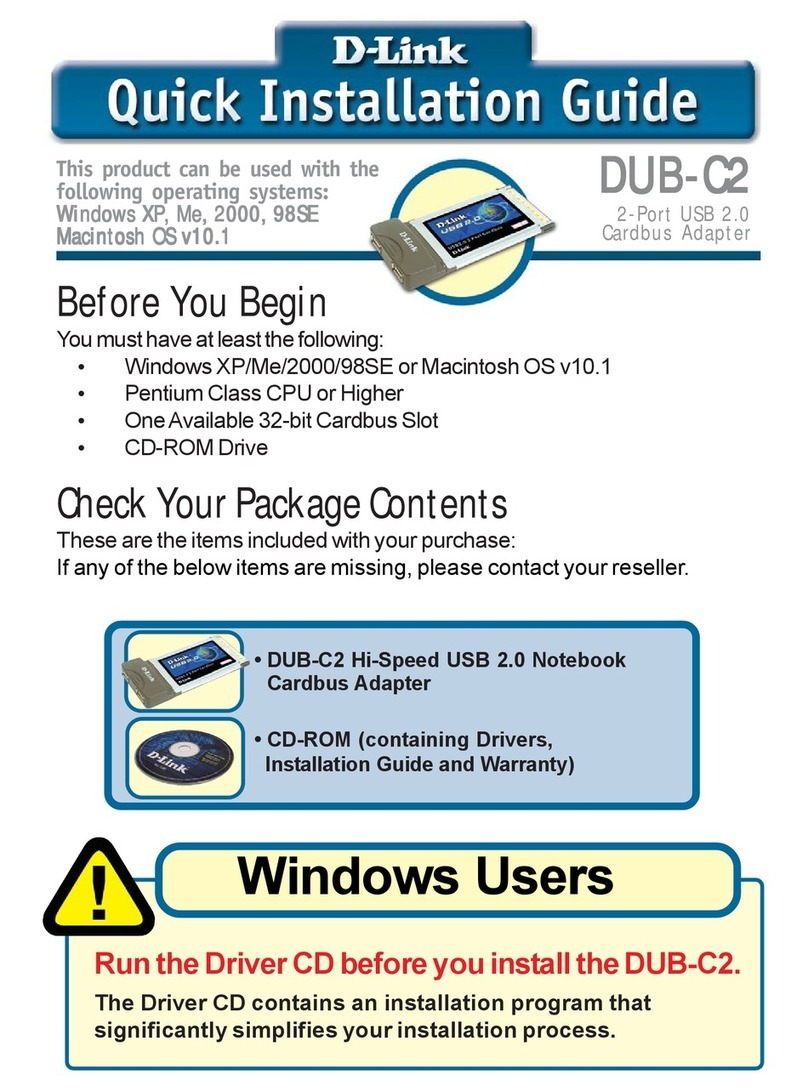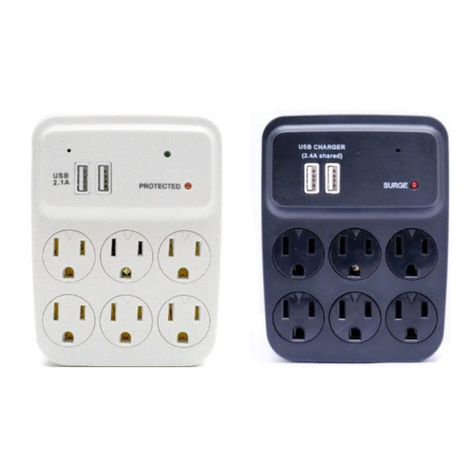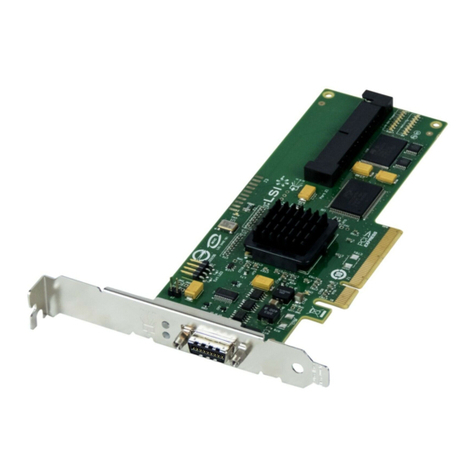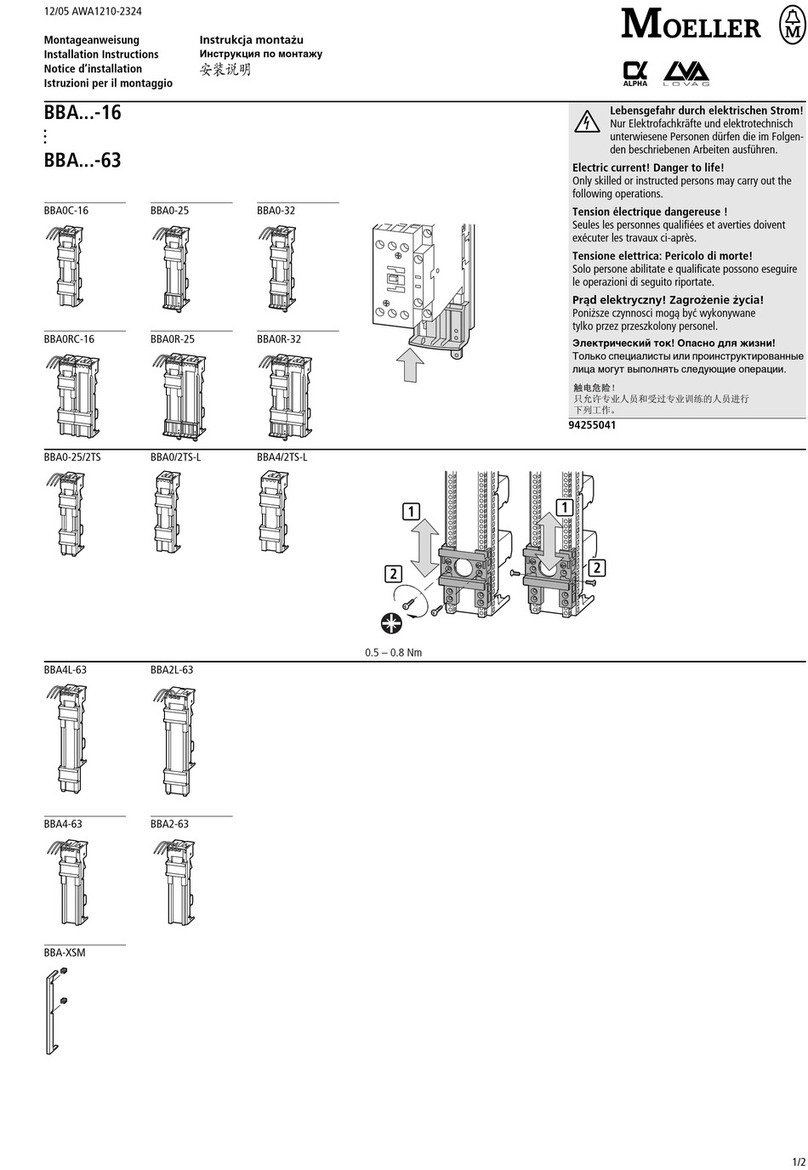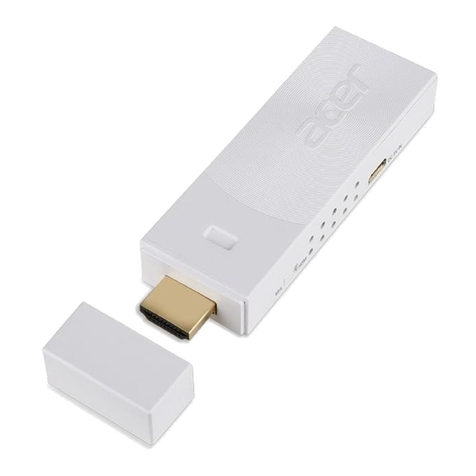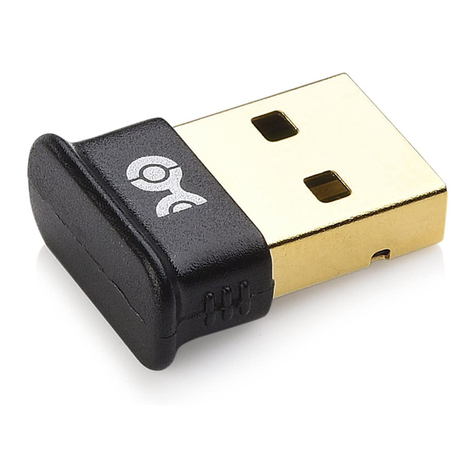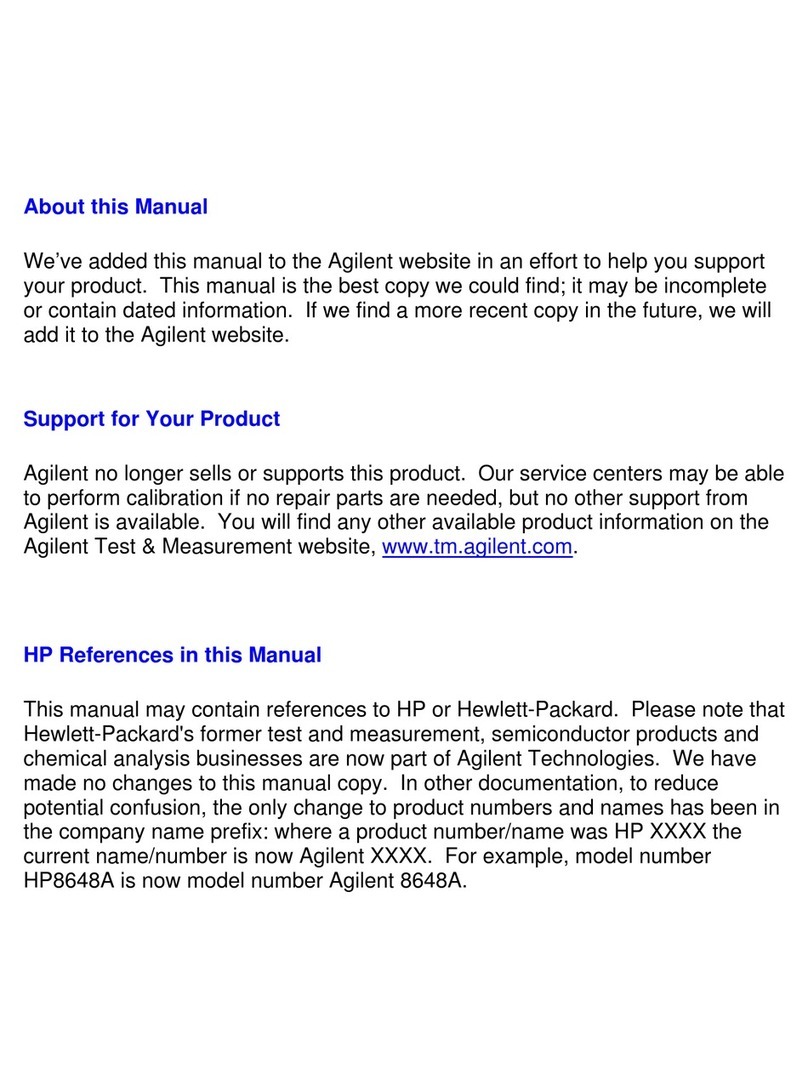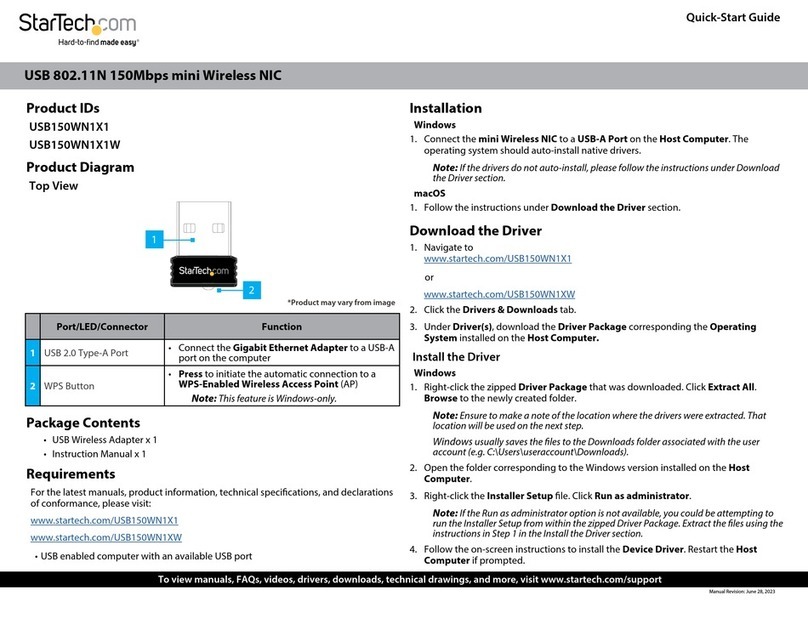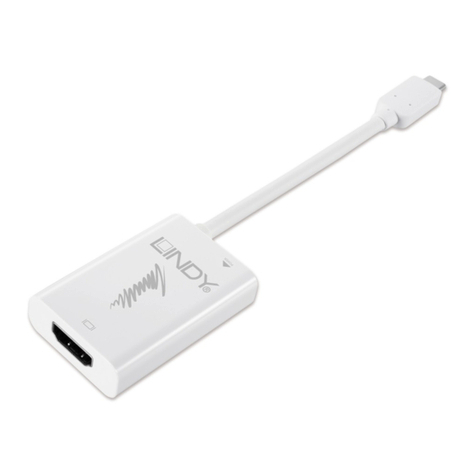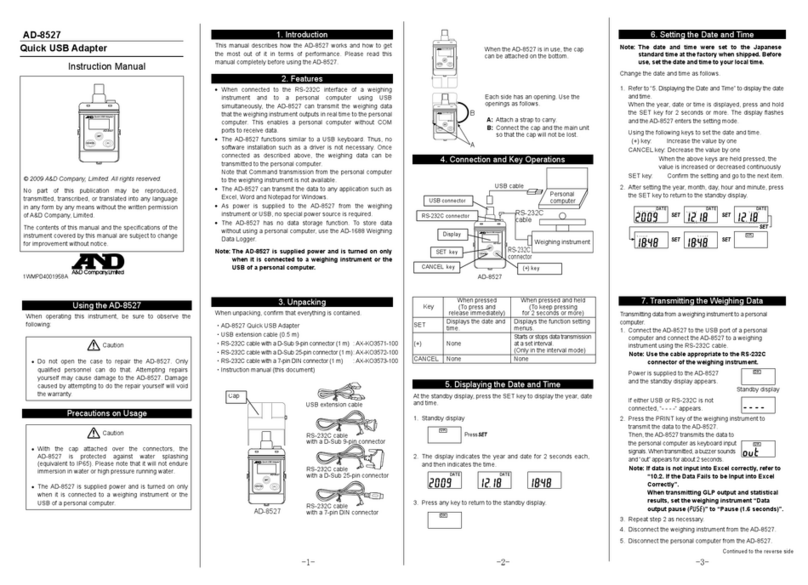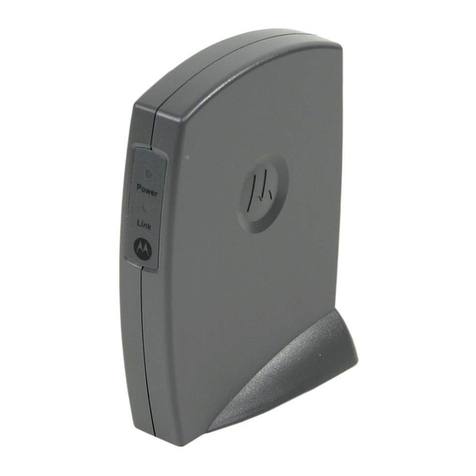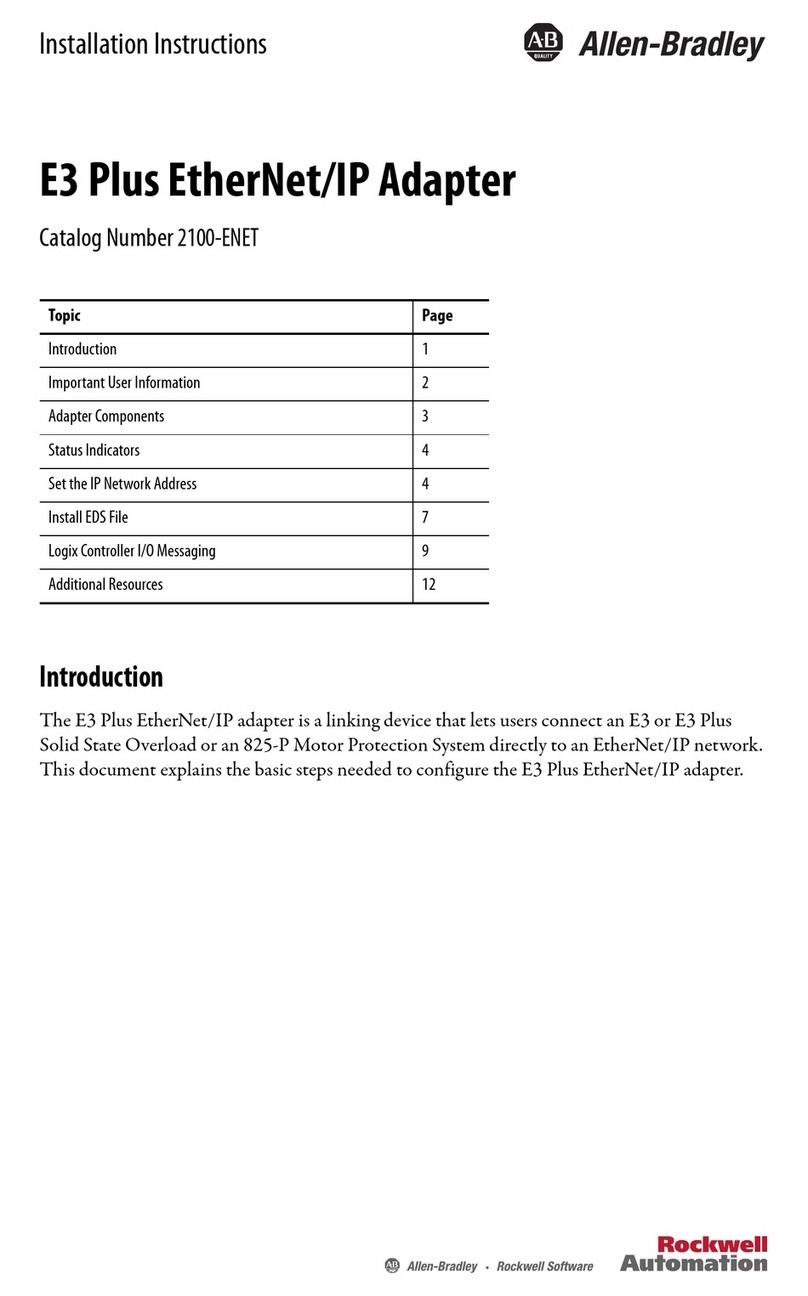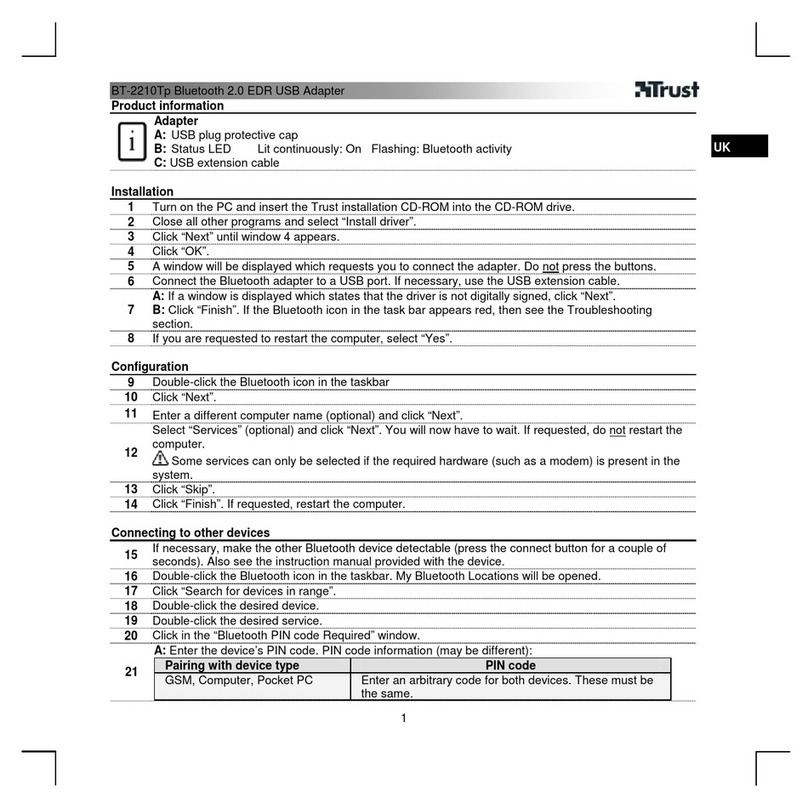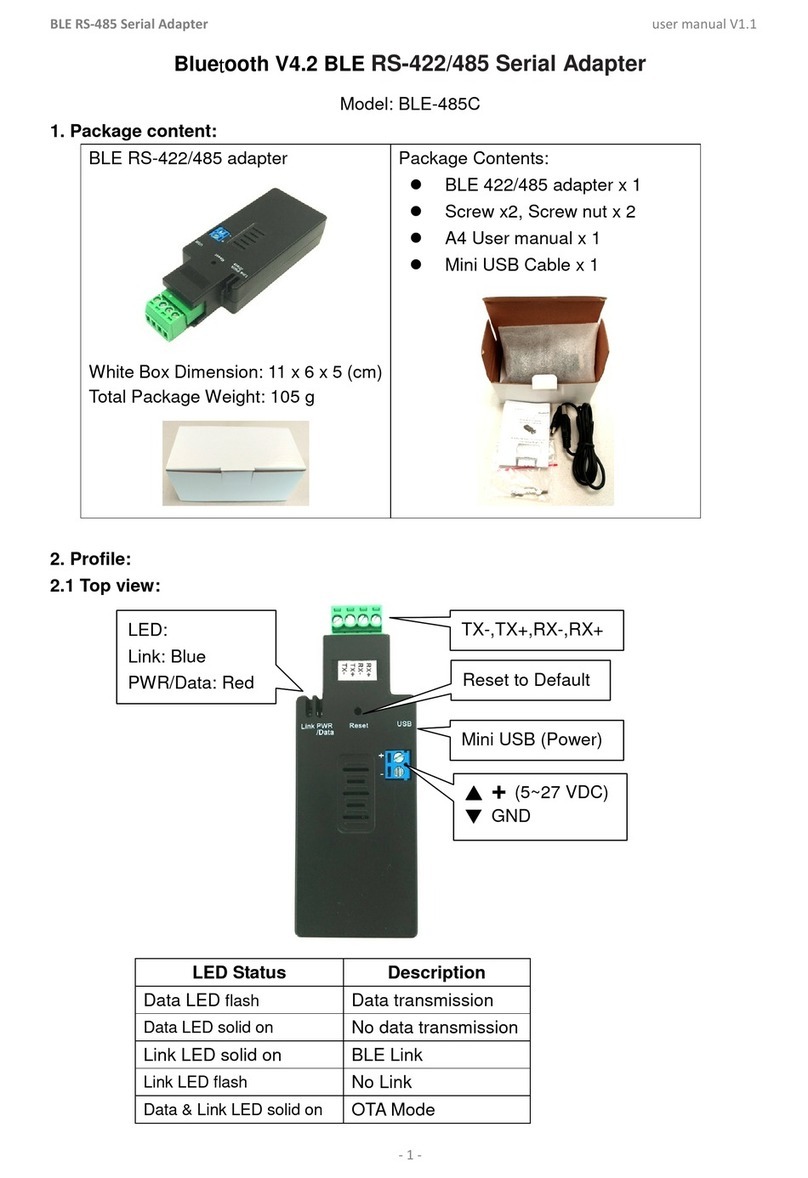
-8-
Install the driver
To start the installation script, proceed as follows:
1. Execute the following command to start the script:
cd DriverInstall
./install.sh
2. Select the option INSTALLATION MODE.
The driver is now compiled and loaded. This process can take a few minutes.
For more information on the Installation Mode or any information on the Patch
Generation Mode, refer to the corresponding readme file or to the kernel
documentation (which usually can be found in the directory /usr/src/linux/
Documentation/ on your system).
Novell Netware
The driver is a 32-bit ODI HSM Novell NetWare server driver for the DGE-550SX
network adapter. It supports both Netware 5.10 and Netware 6.x. In addition to the
32-bit server driver, a Novell ODI 16-bit DOS client MLID driver is available for the
latest Novell NetWare VLM Client.
NOTE: To perform the installation, you must have access to the server console.
NOTE: The setting for Minimum Packet Receive Buffers in the startup.ncf must be
increased to at least 120 per network adapter (e.g. for three network adapters you
should add Set Minimum Packet Receive Buffers = 360 to startup.ncf). On SMP
Systems (Symmetric Multi Processing Systems), you may have to multiply this
number with the number of active processors.
Novell Netware 5.10
To install the network driver on Novell NetWare 5.10, proceed as follows:
1. After you have installed the network adapter in your computer, boot your NetWare
system.
NetWare detects the new network adapter and tries to install a driver.
2. To get a list of available drivers, press <Enter>.
3. The menu “Select a driver” is displayed.
4. To install an unlisted driver, press <Insert> (the D-Link driver is not listed).
5. To specify the path to the driver, press <F3>.
The window “Specify a directory path” is displayed.
6. Type the path to the driver.
If you are installing from CD-ROM, the menu “Select an action” is displayed.
Here, select CONTINUE AND ACCESS THE CD-ROM.
The menu “Select a driver to install” is displayed.
7. Select the driver for your network adapter.
